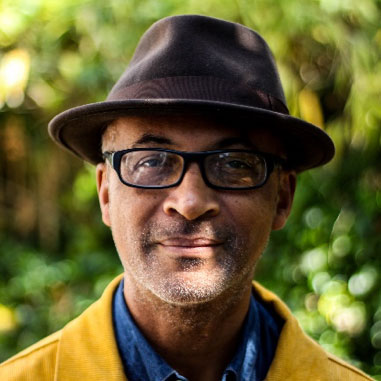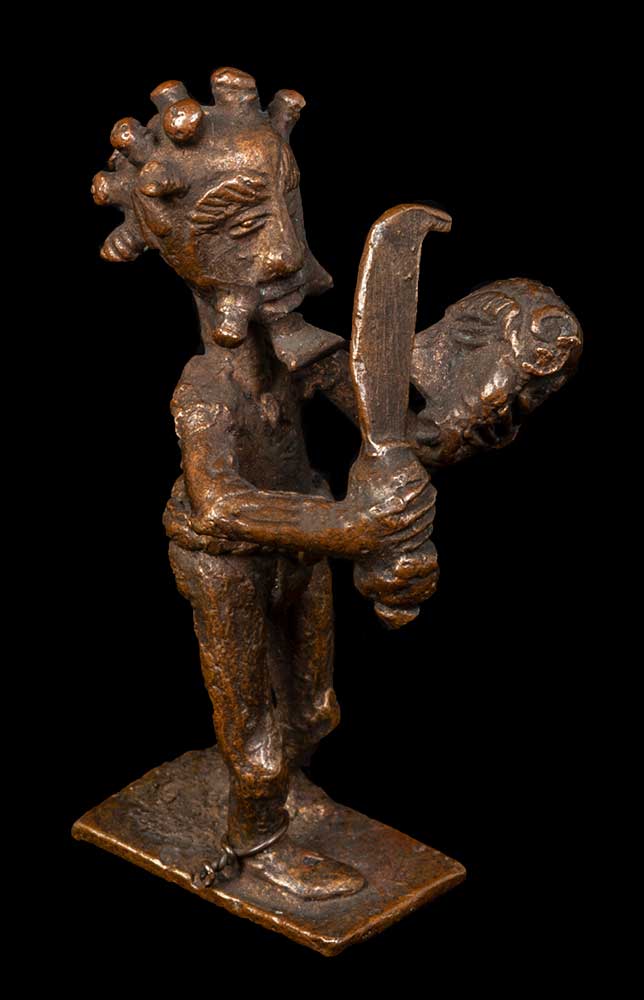
 Click image for a larger view
Click image for a larger viewPitt Rivers Museum, University of Oxford
Accession number: 1884.47.14
Colin Grant
Colin Grant is an author, historian, and Associate Fellow in the Centre for Caribbean Studies. His books include: Negro with a Hat: The Rise and Fall of Marcus Garvey and Bageye at the Wheel, which was shortlisted for the Pen/Ackerley Prize.
As a producer for the BBC, Grant’s drama-documentaries included African Man of Letters: The Life of Ignatius Sancho; and A Fountain of Tears: The Murder of Federico Garcia Lorca.
Grant also writes for several publications including The Guardian, TLS, and New York Review of Books. His book Homecoming: Voices of the Windrush Generation is published in October.

Throughout my childhood in 1970s Luton, as the son of Jamaican parents, I often wondered about the anomaly of our location. I dreamily reflected on what it would have been like if I'd grown up in Jamaica - outdoors with sun on my back and sea air in my lungs, and the verdant beauty of the island to satisfy my eyes rather than the myriad concrete buildings of this forbidding industrial town. Occasionally, I'd extend that mind-game to my parents. How different would their lives have turned out if they'd grown up in West Africa, the homeland of their forebears who'd been abducted centuries earlier?
No doubt such reveries inspired “Back to Africa” movements like Marcus Garvey's. They held out the chance to return home; the promise of restoration; the possibility of being complete once more; righting the great wrong. In 2005 the psychologist, Joy DeGruy proposed a theory of the psychological legacy of the trade in Africans. She gave it a name: Post Traumatic Slavery Syndrome (PTSS). Perhaps that explains why Africa was rarely discussed in my childhood; and outside of our home, it only figured embarrassingly at Sunday Mass when the collection plate came round.
But what of the trauma of separation of the enslaved? The breach, the shearing off from reality was sudden. We know that now. But is it conceivable that those who were herded onto ships to cross the Atlantic three hundred years ago were conscious of the permanence of the separation?
Oluale Kossola (renamed Cudjo Lewis by a slave-owner) was the last African to be stolen from the continent by merchants in 1860 who'd circumvented legal restrictions imposed on the slave trade. When, decades later, towards the end of his life in the 1920s, Kossola was interviewed by the writer and anthropologist Zora Neale Hurston (for the posthumously published Barracoon), he was relieved and excited. Perhaps, when the interview was published, word would reach his homeland and someone would be able to inform his tribe what had become of him; why he'd suddenly gone missing.
“I lonely for my folks,” he told Hurston. 'After 75 years, he still had that tragic sense of loss. That yearning for blood and cultural ties. That sense of mutilation,' she wrote. Hurston didn't have the heart to tell the old man that there was almost certainly no one left; his tribe had been wiped out in the raid; Kossola was the last of the Tokkai.
When Zora Neale Hurston reflected on Kossola’s story, she confessed to being deeply disturbed by what she’d gleaned of African complicity in his enslavement. It shook her from the peel to the core. 'My people had sold me and the white people had bought me', wrote Hurston. 'That did away with the folklore I had been brought up on – that the white people had gone to Africa, waved a red handkerchief at the Africans and lured them aboard ship and sailed away.'
In West Africa, slave-trading played a considerable role in the accumulation of wealth for the Fon of Dahomey (now Benin) and for the Akan in the kingdom of Asante (now Ghana). The Asante Empire exported slaves and used the profits to import gold.
A tiny two-inch figure, made from copper alloy, of a warrior armed with a machete - one of the Asante gold weights at the Pitt Rivers collection - speaks to the violence of the Atlantic Slave Trade. My eye is drawn to the machete because of its familiarity. The machete is the ubiquitous tool in Jamaica. The long blade with a sharp point is often used in fields to till the land. Do not be surprised though if you see someone flashing a machete as he chases after another down the street; for it can quickly be brought out to settle an argument.
The figure in the Asante gold weight is not just brandishing a machete; in his other hand he holds a severed head. Why the depiction of such violence would be cast for weighing gold seems enigmatic. Isn’t such a figure supposed to evoke a proverb? Maybe it does but after centuries of cultural disruption, the message is hidden from me. Had my forbears not been plundered; had my parents and I grown up in West Africa perhaps we’d have the key to its secret.
But the figure immediately conjures the Dahomian warriors of Barracoon. Armed with machetes they’d raided Kossola’s village and cut off the heads of the elderly; heads which were then strapped to the waists of the raiders; heads which Kossola struggled to turn away from on the three-day forced march to the compound where he would be traded for gold.
Delicately cast Asante gold weights like the warrior figure were typically placed on scales to determine the weight and value of gold dust, that would be used subsequently in commercial transactions. But picture this: how many of these weights would have had to be put on scales to balance the life of an enslaved African?
In the 1970s, I was always struck that my father, Bageye, had his peculiar ways which probably had more in common with the Caribbean or Africa than with Luton. One of his characteristics was that he’d never pay for anything according to the price on the label.
How much that value? he’d ask the man behind the till.
It costs “so much”, the shopkeeper would reply.
I didn’t ask how much it cost, thundered Bageye. I ask how much it value.
Bageye wanted to know its worth - both to him and to the trader.
I wonder about the worth of this artifact, this Asante gold weight, and the strange journey that has culminated in its display here in Oxford. What is its value? To remind us of our loss, perhaps? But maybe it was made as an ironic critique; cast by a subversive Asante artist/artisan. A reliable guide to worth, but a reminder too of greed and betrayal. How much do we trade short-term financial gain for our long-term cultural and emotional loss?